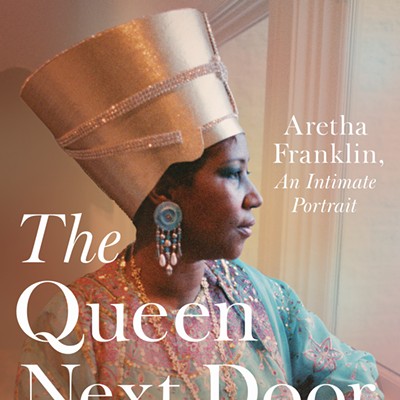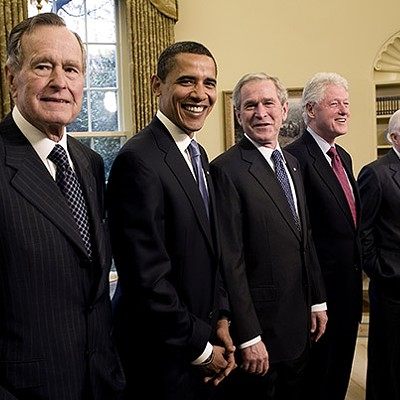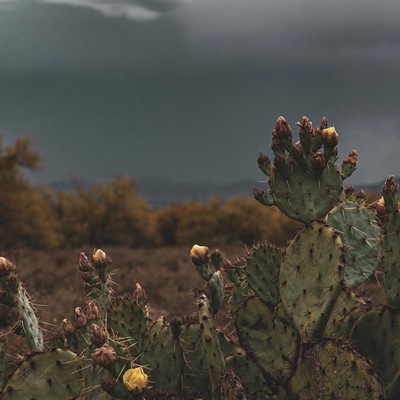Writing in the telegraphic style that was the text messaging of its day, Churchill asked, "What's chances you doing pictorial day enlife (in life) of Doughfoot on Okinawa?"
Translation: Churchill wanted a photoessay that chronicled a GI's day from first light to night. One month into the bloody battle of Okinawa, one of the last of World War II, Americans, Japanese and Okinawans were dying by the thousands. Churchill wanted to give Life's millions of readers nitty-gritty pictures of American soldiers trying to stay alive while trying to kill the Japanese.
Smith duly produced a series of black-and-white images of one Terry Moore, now exhibited in Human Interest: Photoessays From the Collection, the new show at the Center for Creative Photography. The Moore pictures prove, yet again, that war is hell.
"In a Foxhole in the Rain, Okinawa, 1945" has Moore taking a drag on a cigarette stub, at the center of a wretched trio of soldiers. He and his buddies are chin-deep in a mud hole, and the rain is bouncing off their metal helmets and ponchos. The 82-day campaign coincided with the Pacific monsoons, but it's not only the wet misery of the rain that worries these grunts. The caption that eventually appeared with the photo in Life revealed that the plinging sound of the drops often alerted the Japanese to the presence of a foxhole. Rainfall could be a death sentence.
In "Ration Lunch," a filthy Moore grimaces as he eats some indefinable food--mashed beans, perhaps?--cold, right out of a can. A wedding ring glimmers on his left hand, giving a hint of his longing, perhaps, for a young wife back home.
Nowadays, we're used to marveling over the instantaneous transmission of war photos over the Internet, but the Life operation was surprisingly fast for those antiquarian days. Smith's pictures were published in the magazine June 18, 1945, a mere 44 days after Churchill first telegraphed the assignment. One thing hasn't changed. Then, as now, war photography was the most perilous of professions: Smith had already been wounded by the time his photos went to press. Shellfire exploded in his arm and jaw; he was so badly injured that he did not work again for two years.
Smith and the show's dozen other photographers all worked in the mid-20th century. Their medium was the photoessay, a now nearly forgotten form in which magazines devoted pages and pages to a single illustrated story that was long on pictures, short on words.
Published between 1935 and 1972, the photoessays in this exhibition appeared in the era's big picture magazines, particularly in Life, but also in Look, Collier's and even Fortune. In today's fractured media environment, it's almost impossible to grasp the impact these magazines once had on American life. In the 1960s, curator Britt Salvesen tells us in her wall text, Life had a circulation of 8.5 million and claimed 20 million readers. For a young photographer to get into these magazines was to be catapulted nearly instantly to the heights of the profession.
As a 21-year-old in 1934, for instance, Peter Stackpole began documenting the construction of the San Francisco Bay Bridge on his own, trailing the workers, riding with them on the boats. He sent off his fine black and whites to Vanity Fair, and as soon as they were published as "The Bridge Builders" in 1935, Stackpole was flooded with invitations from Fortune and Life.
Salvesen drew 21 separate projects from the center's archives--selecting just a few photos from each one--and their stories are wide-ranging. They go from wartime curiosities like Stackpole's 1943 "Girl Pilots," to celebrities and starlets, to America's industrial might (Andreas Feininger's "Man-Made Landscapes") to the perennial photographic subject of poverty.
Gisèle Freund tackled "The Depressed Areas of England" in 1936, showing ragged miners' kids in ugly blackened villages. Aaron Siskind explored Harlem throughout the '30s, producing pictures of storefront churches and grim apartments in "Harlem Document," published in Fortune, of all places, in 1939 and Look in 1942.
The era is fondly remembered as the golden age of photojournalism, but Siskind exposes some of the contradictions of the form. He wanted to arouse his fellow Americans to the plight of black urban poverty, but he was a white man, an outsider who couldn't help but bring his own preconceptions to the task. And he was not always welcome. In "Storefront Church," 1932/1936, several devout women in their Sunday best are totally absorbed in the action, but one glares at the camera--and photographer--as if demanding to know why he invaded the church's private space.
It helped that Siskind spent years on the project, and he managed to enlist a black sociologist, Michael Carter, to write his text. (Today, his Harlem pictures today are highly regarded in the black community: in 2003, on the 100th anniversary of his birth, the Studio Museum in Harlem exhibited them.)
Siskind was a lefty who came out of the Photo League, a group dedicated to using their cameras to push for social change, if not revolution. But the magazines he worked for were hardly radical. As journalist Alexander Cockburn noted in a guest lecture last week, the photographers had to "dance to the tune of Mr. Luce," meaning Henry Luce, a Republican and editor in chief of Life and Time.
Photographers were part of a collaborative process, and final decisions were made by editors employed by big corporations. You won't find any images of "militancy" among the poor in these pictures, Cockburn noted, no pictures of the oppressed throwing off their chains.
Hansel Mieth and her husband, Otto Hagel, both German immigrants to the United States, were eventually abandoned by Life. They had done plenty of relatively innocuous work for the magazine; in "Texas Ranch," Mieth got an against-type assignment to shoot cowboys. And though she was an outsider--a woman!--she managed to produce some lovely, romantic pictures, including one of a puzzled wrangler who stares at her, half-flirtatious, half-annoyed.
But Mieth and Hagel were suspected of radical views, and when they refused to testify before the House Un-American Activities Committee, their relationship with the magazine deteriorated. They fled to Northern California, where they tried to live off the land, and their last assignment for Life, "The Simple Life," portrays their wholesome routine, sitting at the farm table, gathering eggs. But Salvesen reveals that their animals were dying en masse, and the couple suspected government agents of poisoning them. This subversive information never made it into Life; the story is a reminder that we can never be sure how truthful photographs are.
Smith always felt that his most famous project, "Spanish Village," also suffered from political editing. Photographing in 1950, 11 years after Franco's final victory, Smith wanted to expose the dictator's evil. He did so most successfully in his portraits of the Guardia Civil, the notorious armed military squads that patrolled the plazas and streets of Spain for years. With their pointed hats and set expressions, these men conjure up the terror of Franco's regime.
Yet when the project went to press, the editors selected images and a layout that would avoid "overt political commentary," Salvesen reports. The Catholic Church, for instance, vigorously supported Franco, but the caption for a Smith portrait of a village priest insisted that he concentrated on his flock, not politics.
And, then as now, timing is everything in journalism. Smith had hoped that his work would dissuade President Truman from giving aid to fascist Spain. But his Spanish pictures were published in Life in April 1951, right after the United States agreed to send American dollars to the Generalissimo. Even if his photoessay had carried more punch, it came too late to stop the aid.














